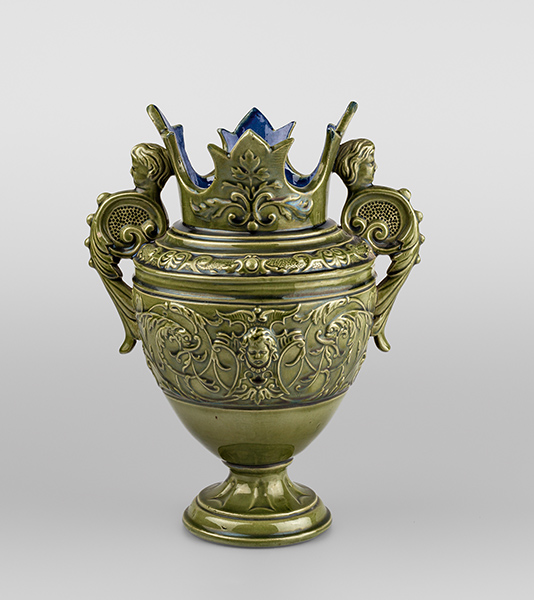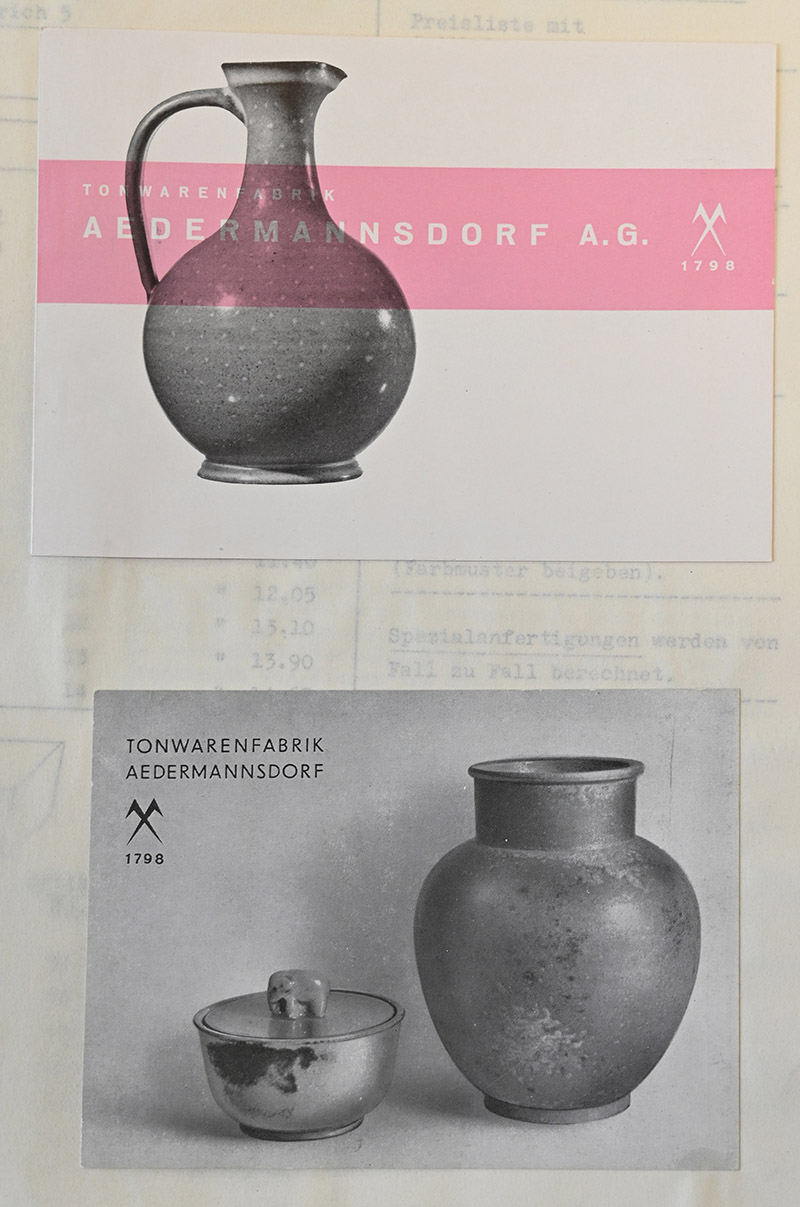
Ceramic objects in CERAMICA CH
Roland Blaettler, Rudolph Schnyder 2014
In 1883, the public limited company “Thonwarenfabrik Aedermannsdorf” (Aedermannsdorf Pottery Factory) was established on the same site as its predecessor, the Matzendorf manufactory (on a property owned by the municipality of Aedermannsdorf in the Canton of Solothurn). Most of its shareholders did not live in the Dünnerntal valley but were members of the political and economic élite of the canton. The new company did well. Thanks to the local clockmaking industry, which was experiencing a period of flourishing, the construction industry was also given a boost, and the newly established department for the manufacture of stoves and tiled stoves at the pottery factory became a highly profitable branch of the business. At the end of 1890, the factory abandoned the use of local raw materials and began importing its clay from the Palatinate region of Germany and from Czechoslovakia. In 1884, it had 13 members of staff, rising to 38 in 1885 and 54 in 1897.
A complete pattern book (“pricelist for brown-glaze cookware”) that has survived from 1895 gives a good overview of the range of wares produced by the company at the time.
The factory was destroyed by fire in 1887 and again in 1913 but on both occasions, it was rebuilt immediately and modernised. In 1913, for instance, production was partially mechanised, and the kilns were converted to coal. At that stage the company had two production lines of equal importance; on the one hand it made stoves and stove tiles, on the other it produced manganese-glazed crockery, as observed by Fernand Schwab during a visit to the factory in 1924.
In 1927, Alfred von der Mühll, an entrepreneur from Basel, purchased the public limited company “Thonwarenfabrik Aedermannsdorf” (Aedermannsdorf Pottery Factory), which was in financial trouble at the time. The company had been forced to reduce its workforce since 1926. While initially the situation improved under the new ownership, the world economic crisis began to have an impact on the company too. In 1934, an art department was established under the leadership of the Bern ceramicist Benno Geiger. When crockery imports from neighbouring countries ceased during the Second World War, the factory experienced an upswing, and new lines of production were added to the traditional brown manganese-glaze ware. After 1947, the factory had to once again hold its own against an increasing number of competitors from abroad.

Advertising postcards for the pottery factory, Basel Mustermesse Fair 1951.
In 1960, the factory was sold to the industrialist Emil Rössler from Ersigen in the Emmental valley. The new public limited company, Rössler AG, now specialised in producing refined white earthenware and, from 1963 onwards, porcelain. Production at Aedermannsdorf ceased in 2004.
The Keramikmuseum Matzendorf (Matzendorf Ceramics Museum) is dedicated to the history of pottery produced at Matzendorf and Aedermannsdorf and holds the biggest collection of pottery objects from the region.
Translation Sandy Haemmerle
References
Blaettler/Schnyder 2014
Roland Blaettler/Rudolf Schnyder, CERAMICA CH II: Solothurn (Nationales Inventar der Keramik in den öffentlichen Sammlungen der Schweiz, 1500-1950), Sulgen 2014, 16–17.
Schwab 1927
Fernand Schwab, Die industrielle Entwicklung des Kantons Solothurn und ihr Einfluss auf die Volkswirtschaft. Festschrift zum fünfzigjährigen Bestehen des solothurnischen Handels- und Industrievereins. Solothurn 1927.
Vogt 2000
Albert Vogt Die Geschichte der keramischen Industrie in Matzendorf und Aedermannsdorf 1798-1998. In: Verein «Freunde der Matzendorfer Keramik» (Hsg.), 200 Jahre keramische Industrie in Matzendorf und Aedermannsdorf 1798-1998. Matzendorf, 9-90.

